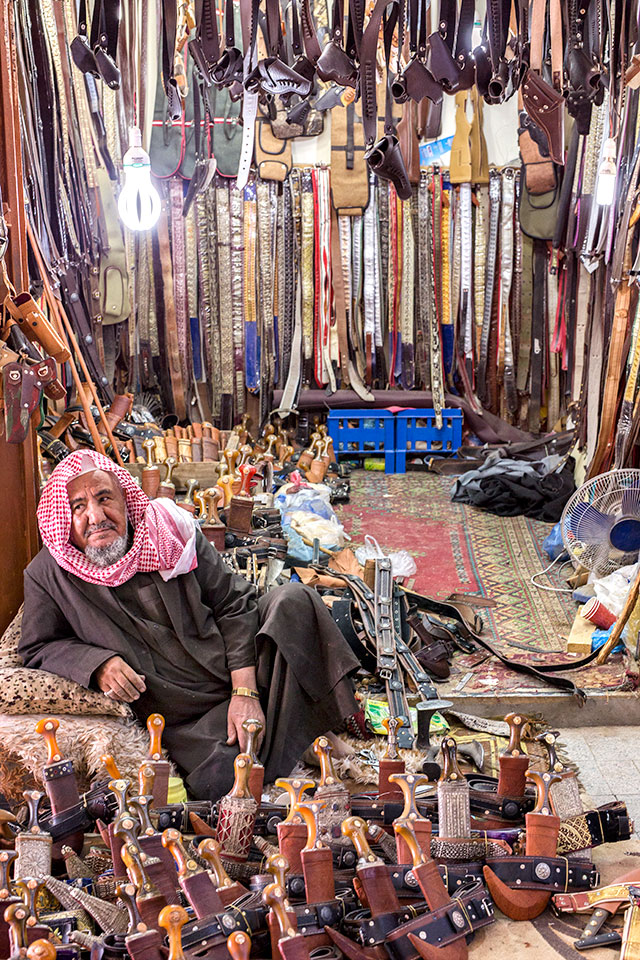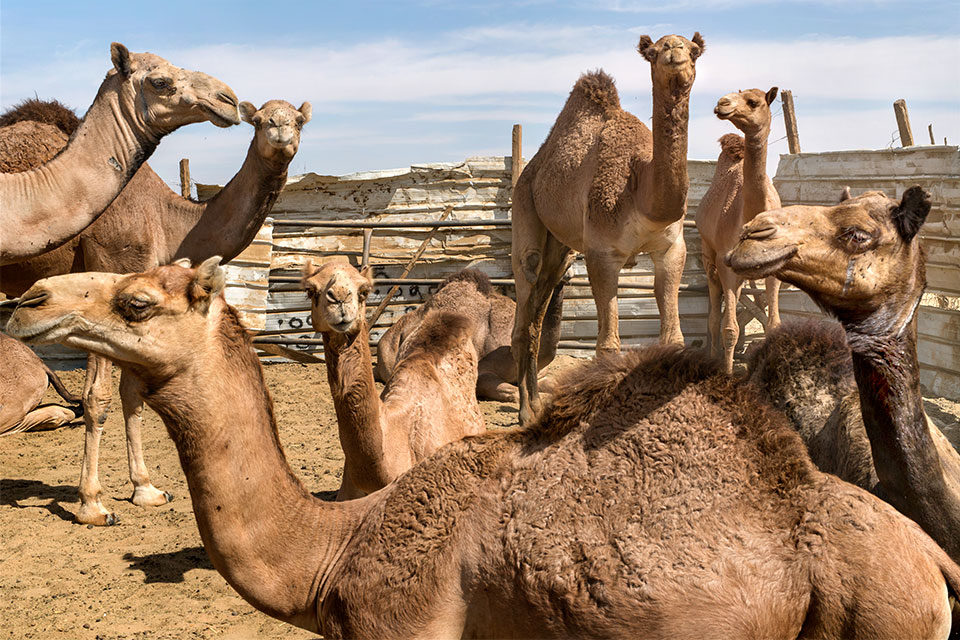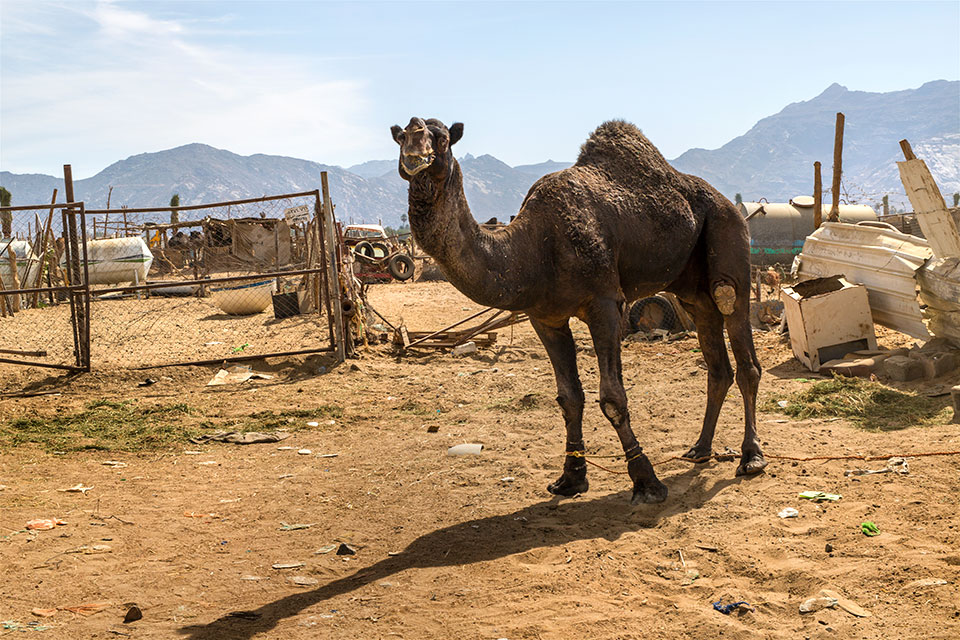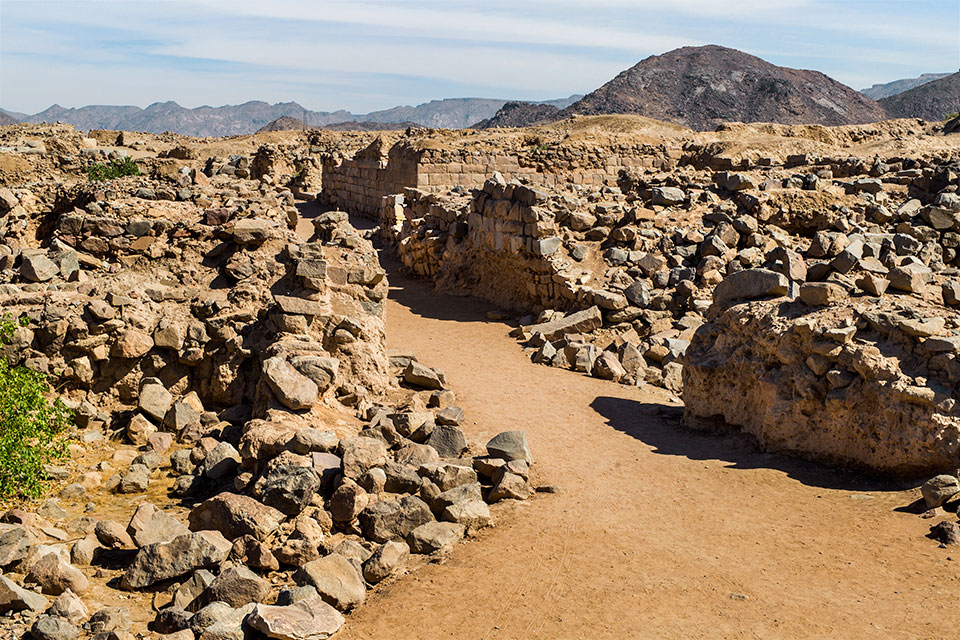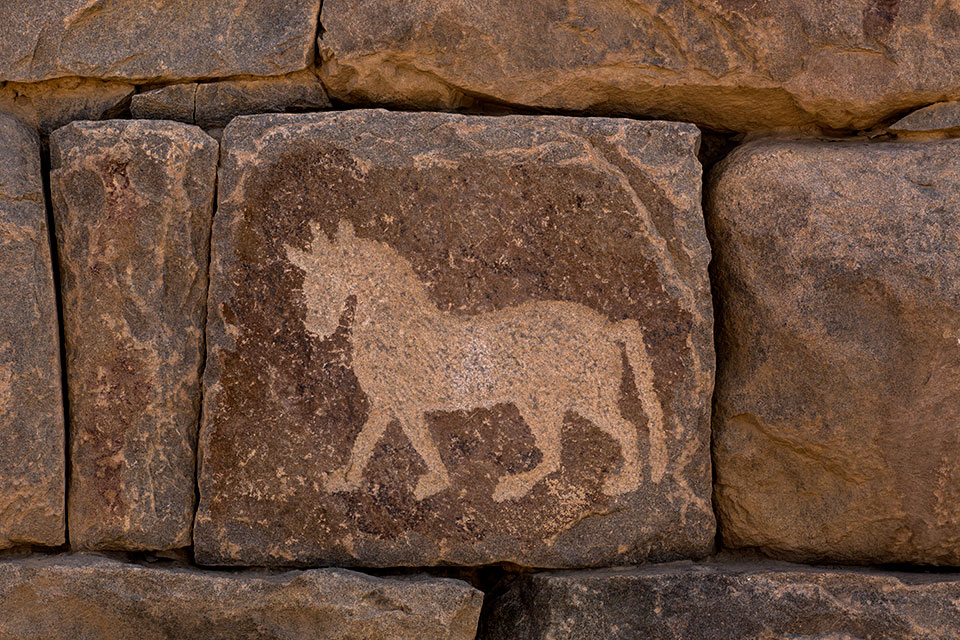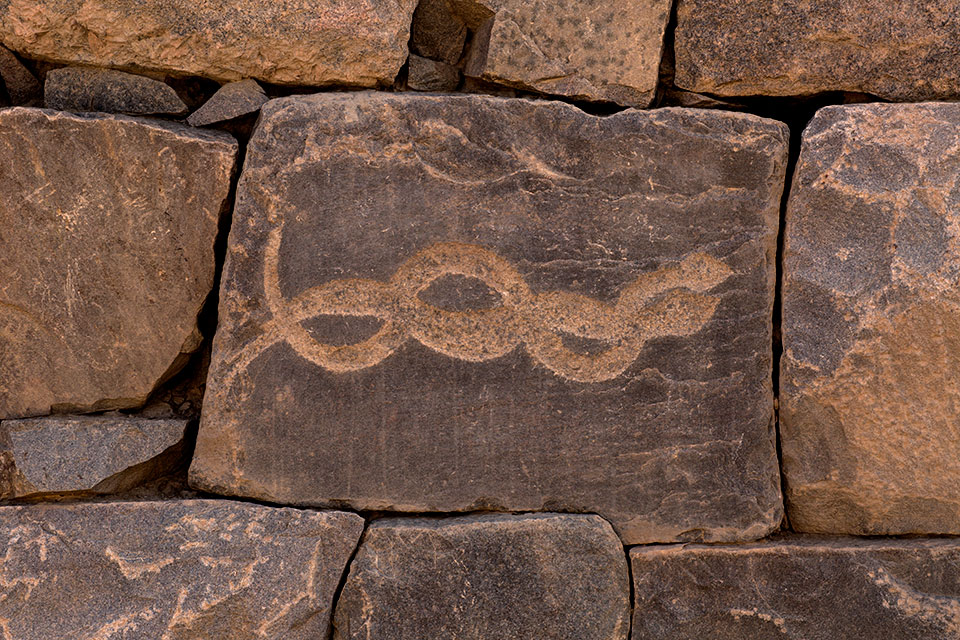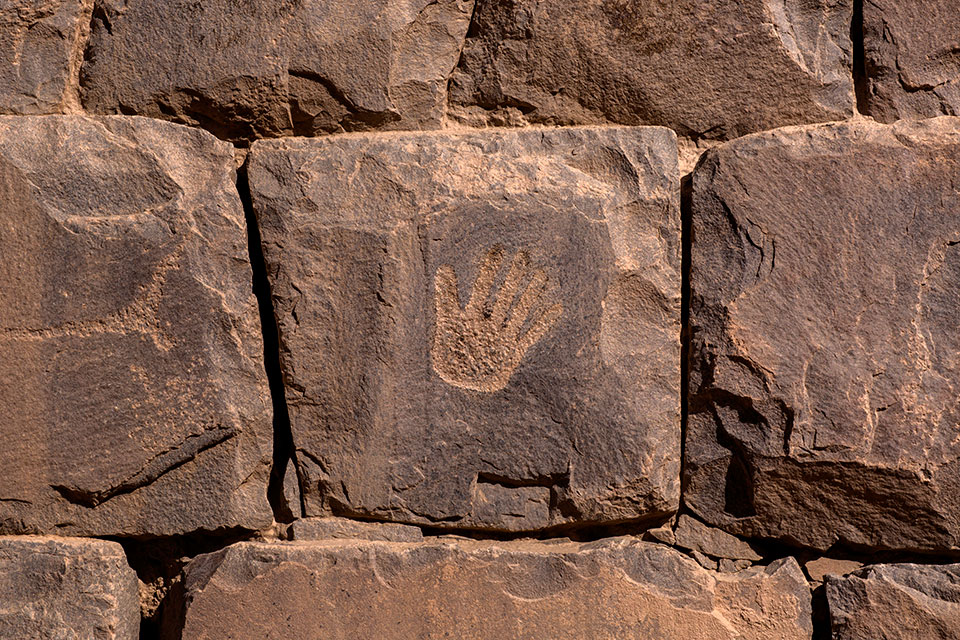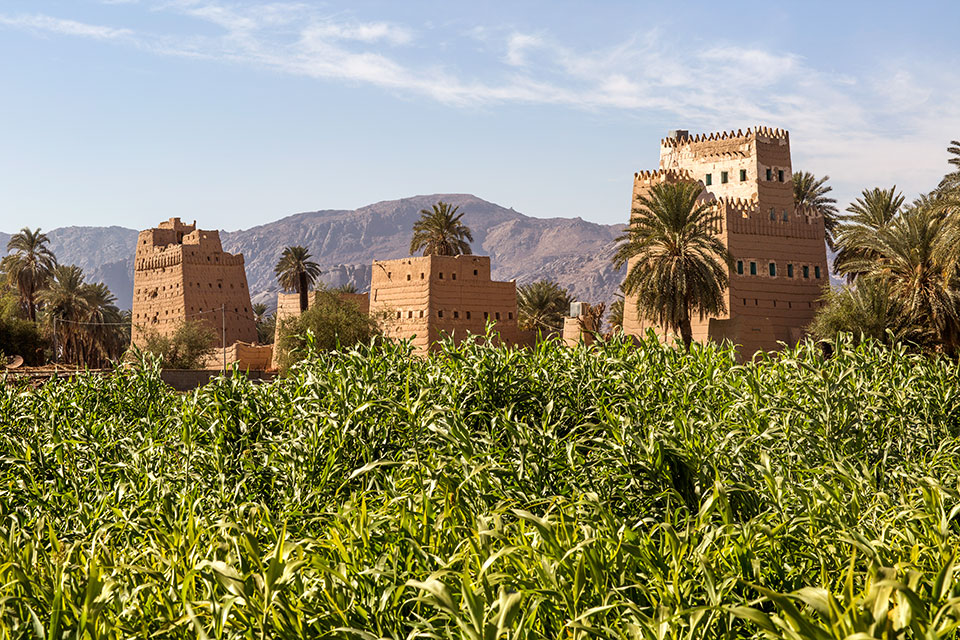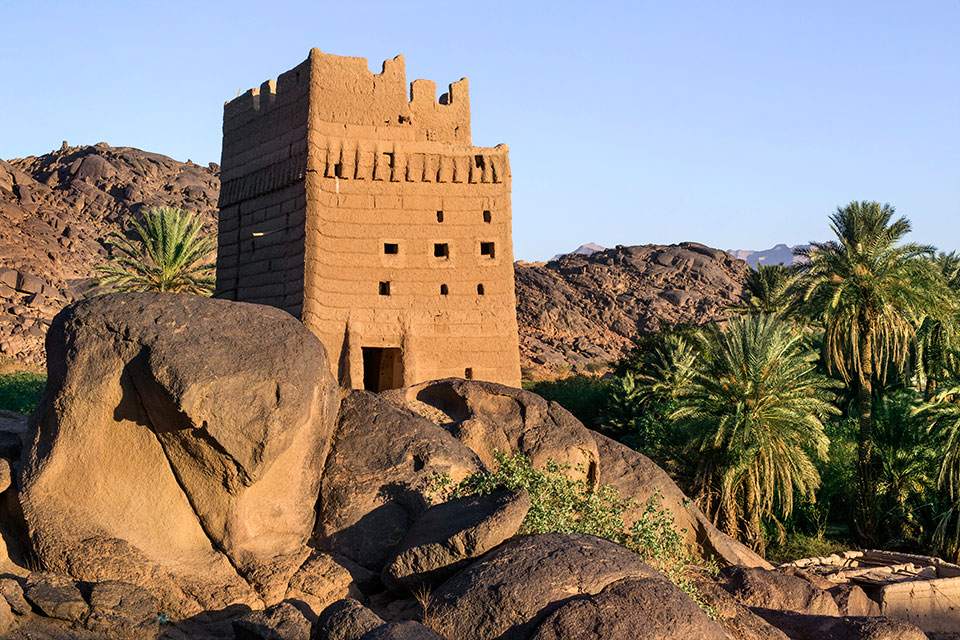Najran and Al-Ukhdud
Najran occupies a strategic position on the modern border of Saudi Arabia and Yemen. Nestled between the rugged mountains of Asir to the west and the emptiness of the Rub’ al Khali desert to its east, the town sits in Wadi Najran, a green and fertile oasis where crops are grown in abundance.
The ruins of the old walled city now known as al-Ukhdud, originally called Ragmat, lie to the south of modern Najran. From around 685 B.C, this was the northernmost city of Saba’, the Kingdom of Sheba, before being conquered by the Romans in 25 B.C. It was part of Yemen until 1934, when it became part of the Kingdom of Saudi Arabia.
Al-Ukhdud was the last major stop on the frankincense trail from Yemen before the caravans divided to take either the western route through the Hijaz to the Mediterranean or the eastern route to the Persian Gulf and the fertile crescent civilisations. Cities along this route levied taxes on the merchants, and therefore became very wealthy. This was reflected in the construction of Al-Ukhdud’s buildings, still evident in the finely dressed stone walls.
The name Al-Ukhdud translates as ‘the ditch’. In the sixth century A.D. the Jewish warlord Dhu Nuwas from Yemen laid seige to Al-Ukhdud and gave its Christian inhabitants an ultimatum to convert to Judaism or die. They chose the later and were thrown into a burning ditch, which is still evident. Estimates of the death toll from this event range up to 20,000.
